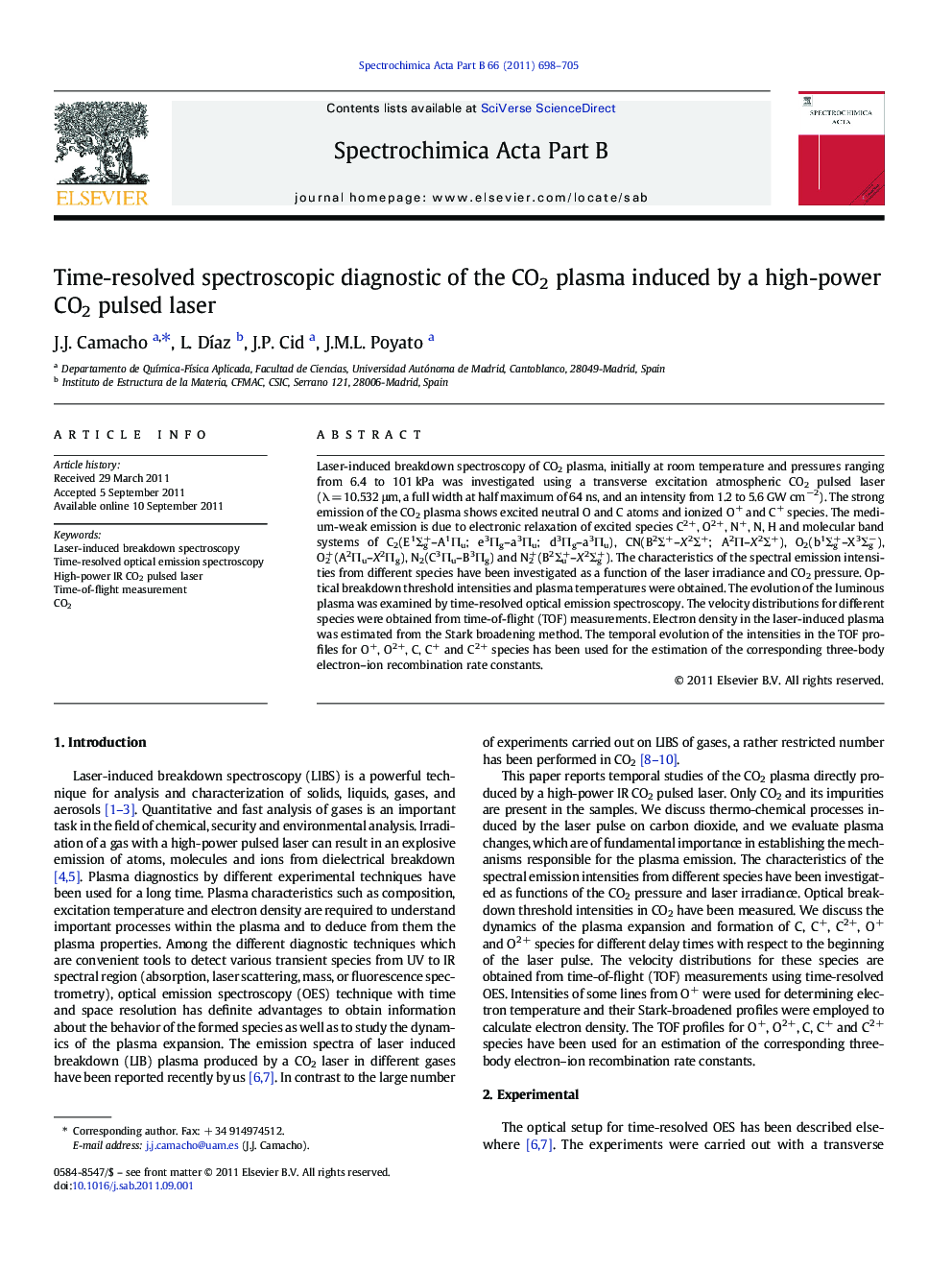| Article ID | Journal | Published Year | Pages | File Type |
|---|---|---|---|---|
| 1240010 | Spectrochimica Acta Part B: Atomic Spectroscopy | 2011 | 8 Pages |
Abstract
Laser-induced breakdown spectroscopy of CO2 plasma, initially at room temperature and pressures ranging from 6.4 to 101 kPa was investigated using a transverse excitation atmospheric CO2 pulsed laser (λ = 10.532 μm, a full width at half maximum of 64 ns, and an intensity from 1.2 to 5.6 GW cmâ2). The strong emission of the CO2 plasma shows excited neutral O and C atoms and ionized O+ and C+ species. The medium-weak emission is due to electronic relaxation of excited species C2+, O2+, N+, N, H and molecular band systems of C2(E1Σg+-A1Î u; e3Î g-a3Î u; d3Î g-a3Î u), CN(B2Σ+-X2Σ+; A2Î -X2Σ+), O2(b1Σg+-X3Σgâ), O2+(A2Î u-X2Î g), N2(C3Î u-B3Î g) and N2+(B2Σu+-X2Σg+). The characteristics of the spectral emission intensities from different species have been investigated as a function of the laser irradiance and CO2 pressure. Optical breakdown threshold intensities and plasma temperatures were obtained. The evolution of the luminous plasma was examined by time-resolved optical emission spectroscopy. The velocity distributions for different species were obtained from time-of-flight (TOF) measurements. Electron density in the laser-induced plasma was estimated from the Stark broadening method. The temporal evolution of the intensities in the TOF profiles for O+, O2+, C, C+ and C2+ species has been used for the estimation of the corresponding three-body electron-ion recombination rate constants.
Keywords
Related Topics
Physical Sciences and Engineering
Chemistry
Analytical Chemistry
Authors
J.J. Camacho, L. DÃaz, J.P. Cid, J.M.L. Poyato,
